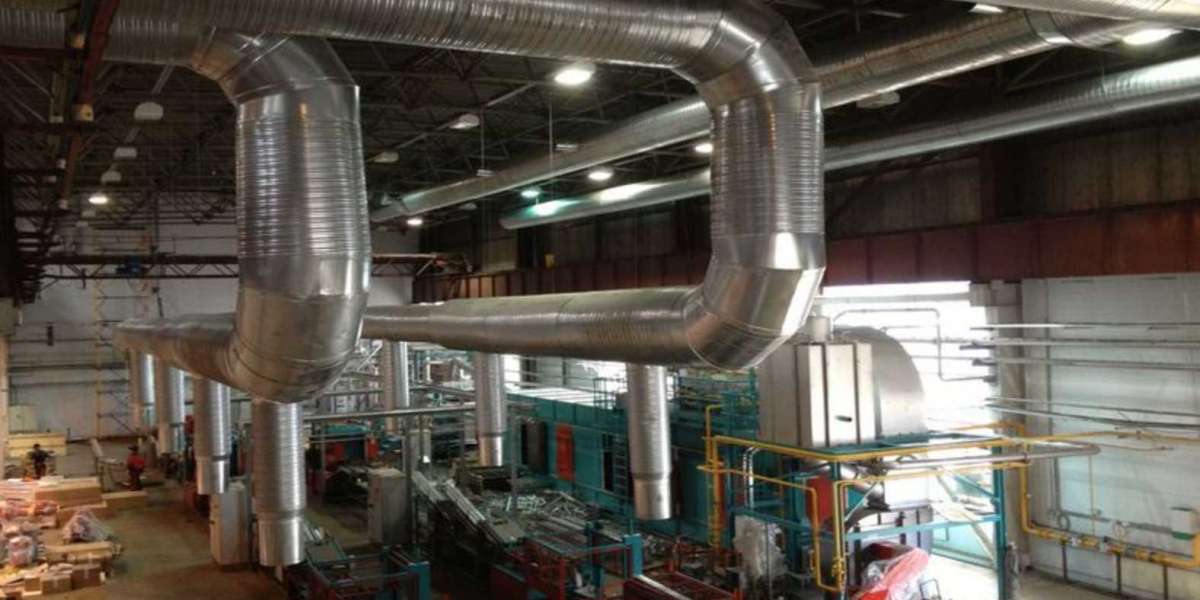Ventilation in Woodworking Factories
Woodworking factories release various airborne contaminants such as wood dust, chemical fumes, and volatile organic compounds (VOCs). These pollutants can pose serious health risks to workers and increase the likelihood of fires or explosions if proper ventilation systems are not in place. Effective ventilation is essential to ensure good air quality, protect workers' health, and maintain operational safety. This article explores the importance of ventilation in woodworking factories and the key elements needed for a successful system.
The Importance of Ventilation in Woodworking Factories
Controlling Dust: Woodworking processes like sawing, sanding, and milling generate fine dust particles that can be harmful to respiratory health. Long-term exposure to wood dust has been linked to respiratory issues such as asthma and bronchitis, and some wood dusts are even classified as carcinogenic. Proper ventilation captures and removes dust, keeping levels within safe limits.
Managing Chemical Fumes: Woodworking factories often use adhesives, stains, and varnishes that emit harmful fumes and VOCs. Exposure to these chemicals can cause short-term symptoms like headaches and dizziness, as well as long-term health problems. A ventilation system designed with localized exhaust helps to efficiently remove these toxic fumes and ensure the air is safe to breathe.
Fire and Explosion Prevention: Wood dust is highly flammable and can lead to dangerous explosions if it accumulates. Static electricity or machinery sparks can easily ignite dust particles in confined spaces. Effective ventilation prevents dust build-up, greatly reducing the risk of fires and explosions.
Boosting Comfort and Productivity: Clean, well-ventilated air improves worker comfort and overall productivity. Employees are less likely to experience fatigue or health problems when working in a properly ventilated environment, resulting in higher efficiency and reduced absenteeism.
Key Components of an Effective Ventilation System
For a woodworking factory to maintain safe air quality, a ventilation system must be tailored to the specific needs of the facility. Key elements include:
Dust Extraction Systems: These systems capture dust at the source using extraction hoods and high-efficiency filters. Ducts and fans transport the dust-laden air to a central collection point, ensuring dust does not remain in the workspace.
Local Exhaust Ventilation (LEV): LEV systems are installed near equipment that generates high levels of dust or fumes, capturing contaminants directly at the source and exhausting them outside the building.
Air Filtration Units: Factories dealing with hazardous particles or fumes benefit from air filtration units with HEPA filters. These units remove fine particles and harmful gases, ensuring clean air is recirculated into the workspace.
General Ventilation Systems: General ventilation maintains consistent airflow throughout the facility, diluting airborne contaminants and introducing fresh air to prevent stagnant air and the buildup of harmful gases.
Installation and Maintenance
To ensure that ventilation systems operate efficiently, their installation and maintenance must be handled by professionals. Proper system design, including the placement of ducts, fans, and filters, is critical for achieving optimal air circulation. Regular maintenance, such as cleaning ducts and replacing filters, ensures the system continues to function safely and effectively.
For more information on professional ventilation system installation and maintenance, visit Termal Engineering, which specializes in the installation of engineering systems.
Conclusion
Ventilation in woodworking factories is vital for ensuring a safe and productive work environment. By controlling wood dust, chemical fumes, and other contaminants, a well-designed ventilation system minimizes risks and creates a healthier, more efficient workspace.
"The air we breathe shapes not only our bodies but also the environment in which our work thrives."








